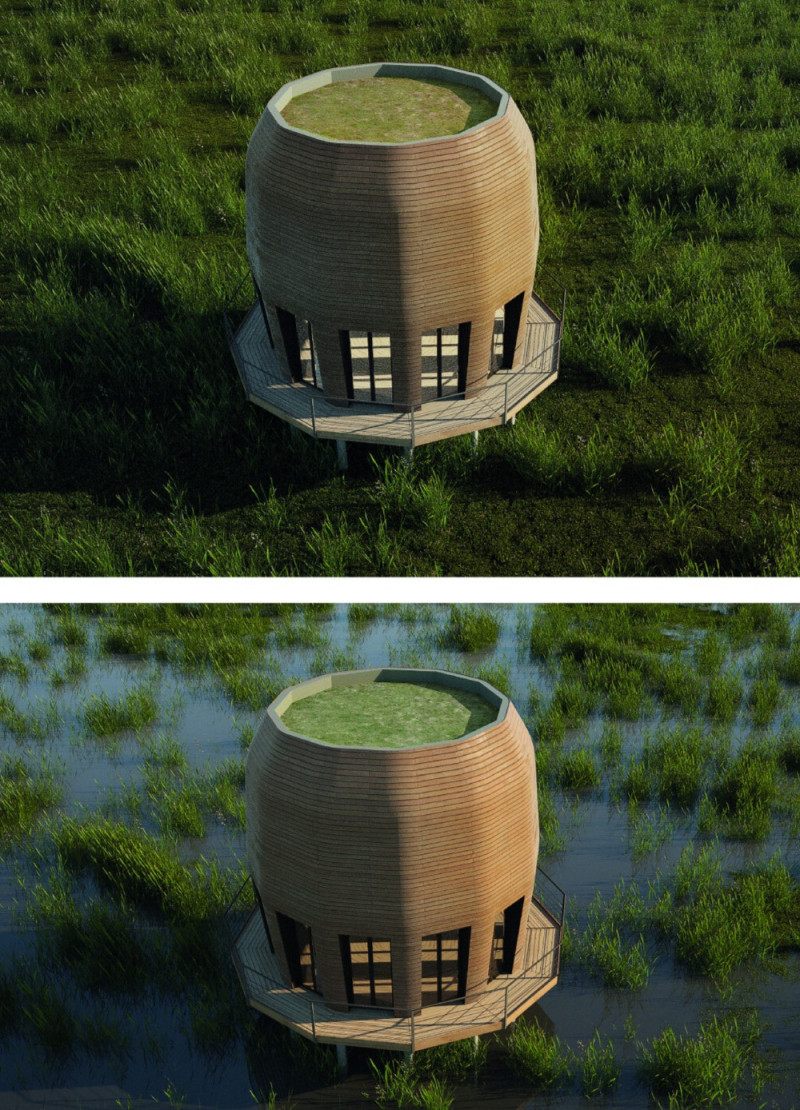5 key facts about this project
At its core, this design is not merely a structure but a thoughtful response to the challenges of urban living. The building houses multifunctional spaces that cater to a diverse range of activities, from community events and social gatherings to educational programs and recreational opportunities. This emphasis on multifunctionality underscores the project's commitment to enhancing community interactions while ensuring that it remains adaptable to future needs.
One of the key features of the project is its innovative approach to spatial organization. The architectural design employs an open-plan layout that promotes fluidity and flexibility within each area. Strategically placed windows maximize natural light while providing unobstructed views of the landscape. The interior spaces are designed to accommodate a variety of uses, with movable partitions allowing for quick reconfiguration in response to different events. This adaptability is crucial for fostering a vibrant environment that evolves with its users.
The exterior of the building offers a striking façade that thoughtfully combines various materials to create depth and texture. The use of natural stone cladding juxtaposed with modern metal elements illustrates a harmonious dialogue between contemporary design and traditional craftsmanship. The choice of materials is not only aesthetically pleasing but also practical, as they contribute to the building’s durability and sustainability. This project utilizes high-performance insulation and energy-efficient windows that significantly reduce the overall energy consumption, reflecting a commitment to environmentally responsible design.
Landscaping plays an essential role in reinforcing the connection between the architecture and its natural surroundings. The integration of green roofs and vertical gardens enhances biodiversity while providing a natural cooling effect for the building. Outdoor spaces are carefully crafted to encourage physical activity and social interaction, featuring walking paths, seating areas, and community gardens that further strengthen the community bonds.
A unique aspect of this architectural project is its emphasis on community involvement in the design process. Engaging with local residents and potential users allowed for an authentic expression of community identity, ensuring that the final design resonates with those it serves. This participatory approach not only makes the project more relevant but also cultivates a sense of ownership among its users.
The architectural design is characterized by its thoughtful attention to detail, offering not just functional spaces but also a sensory experience. Attention has been paid to the acoustics within the building to ensure comfortable environments, particularly in communal areas. Natural elements, such as the use of wood for interior finishes, create a warm ambiance that invites people to interact.
Overall, this architectural project stands as a testament to thoughtful design, merging functionality with sustainability and community engagement. It is an exemplary model of how architecture can respond to contemporary urban challenges while fostering a sense of place. For those interested in delving deeper into the architectural plans, sections, and innovative design ideas of this project, further exploration of its presentation and accompanying materials is highly encouraged. This insight will reveal the intricate layers of thought that underpin the design and the vision that aims to enrich community life through architecture.
























